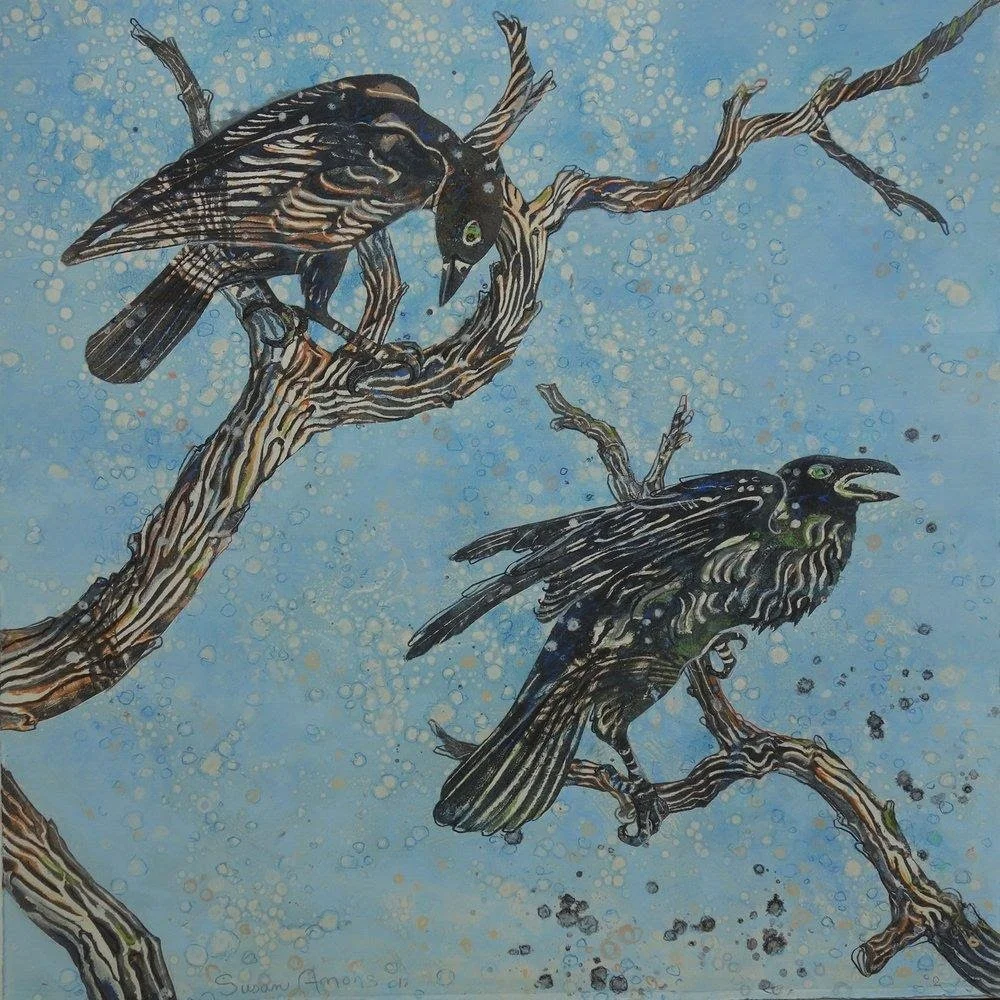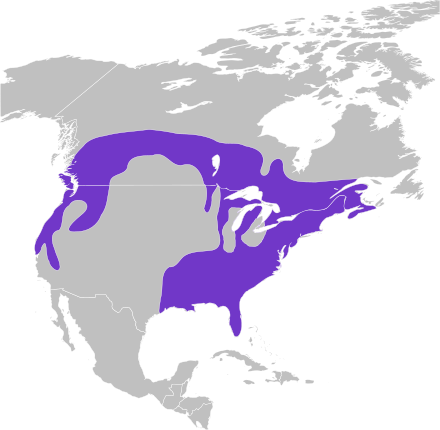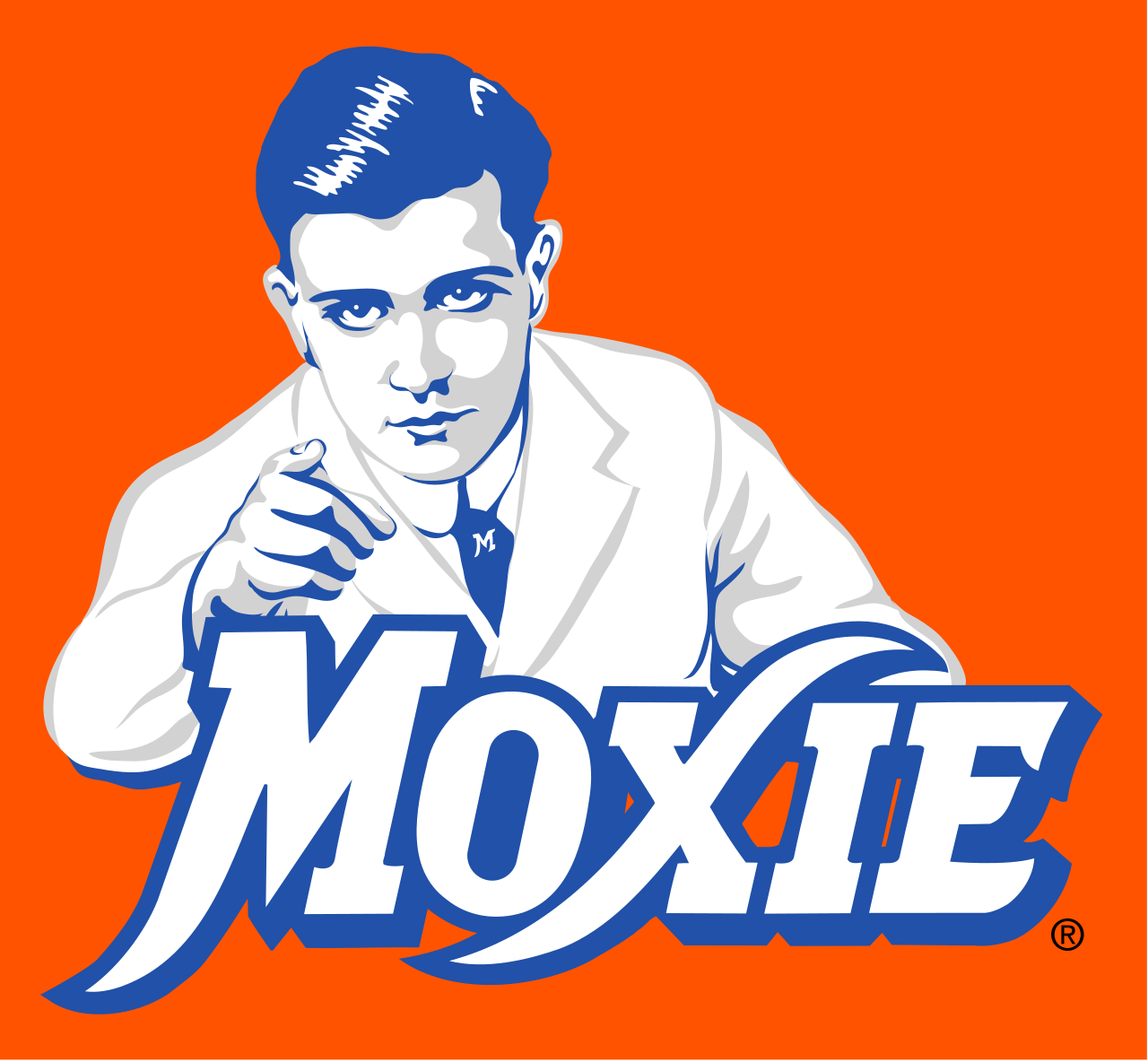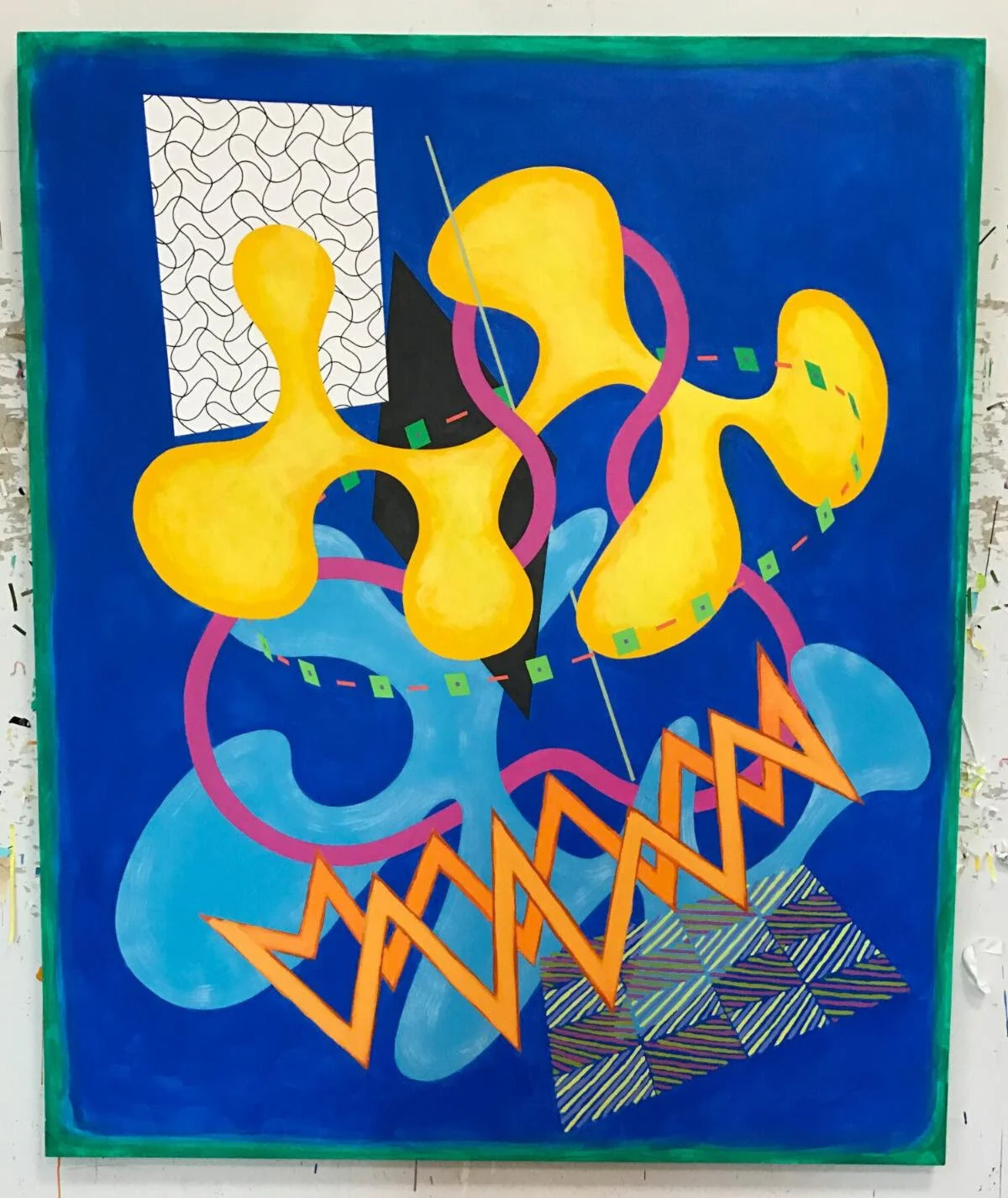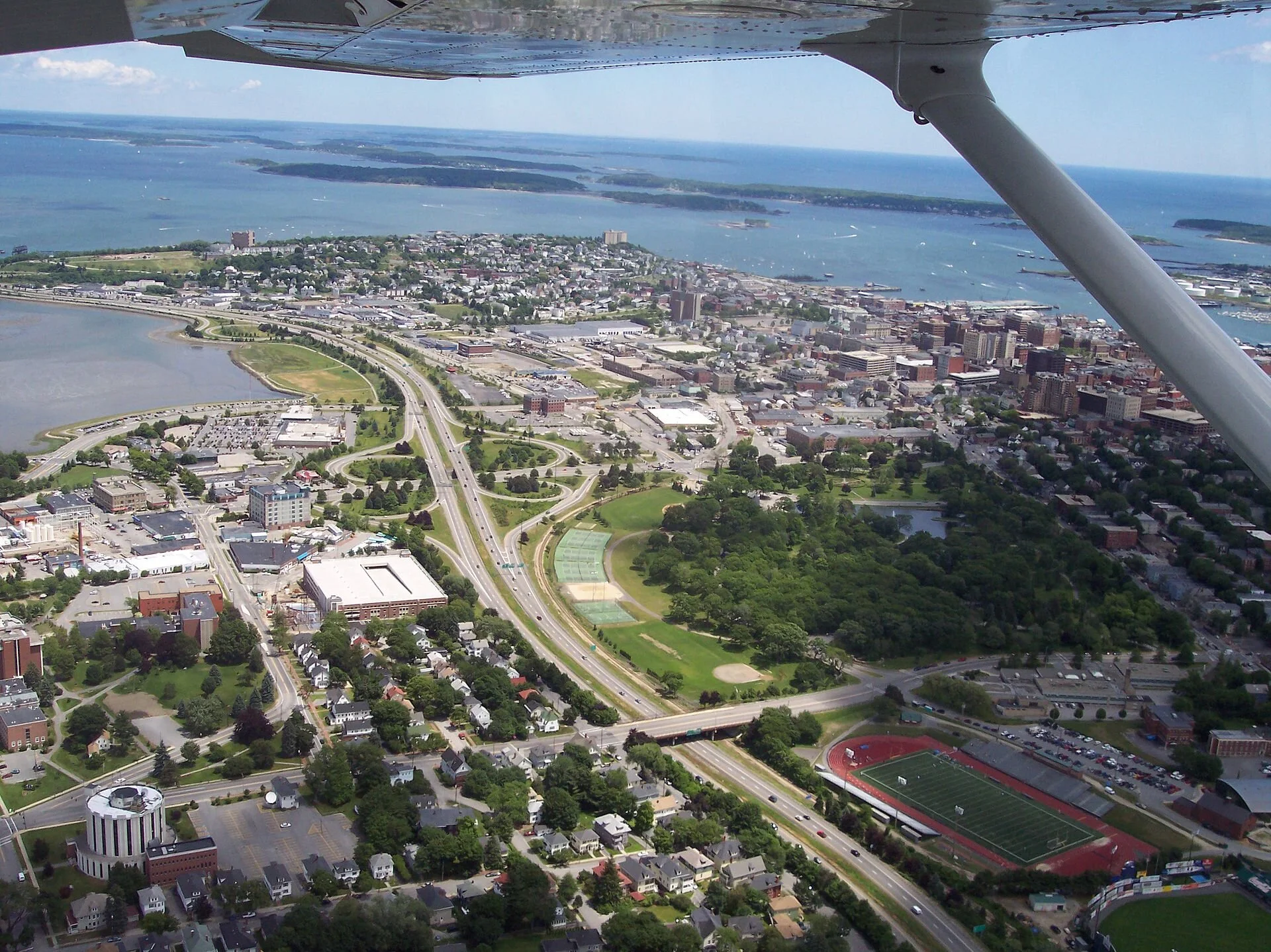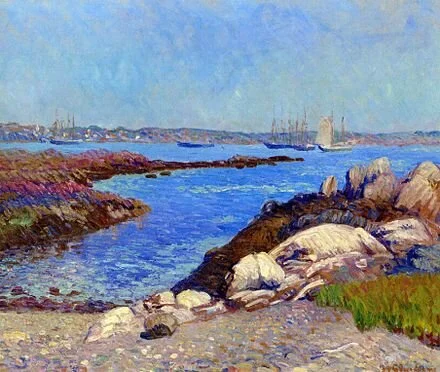
'Coursing through nature'
“Basin, Thoreau’s Remarkable Pothole’’ (digital achival print), by Tim Greenway, in his show “Tim Greenway: Waterways,’’ at Cove Street Art, Portland, Maine, through Sept. 28. (Image courtesy of Cove Street Art)
The gallery says the show uses photography to capture, in his words, "the peaceful yet powerful journey of water flowing from the untouched snowcaps of the White Mountains ... ultimately merging with the Maine coast." Tim Greenway's photography explores “the light, color and texture" of water coursing through nature.
Cold-weather creatures
“Snow Crows” ( monoprint), by Susan Amons, in the group show with Lisa Houck and Richard Remsen entitled “Managerie a Trois,’’ at Cove Street Arts, Portland, Maine, through Jan. 21.
— Photo courtesy Cove Street Arts.
The gallery says the show presents animal-themed artwork focusing on creatures often associated with winter. For more information, please visit here.
Main Street in downtown Biddeford
— Photo by Lookinforahome
Europeans first settled in what became Biddeford, which had been well-populated by Native Americans, in 1616. In the 19th Century, Biddeford became a prosperous industrial center, with granite quarries and brickyards and lumber, grain and textile mills. In recent years, some of the old mills have been converted into retail stores, art studios, cultural-event spaces and upscale housing.
Biddeford hosts the University of New England.
Dare to stare back
“Lemonhead in The Garden (In Spring)’’ (oil on paper), byEric Helvie, in the 16-person show “At Face Value,’’ at Cove Street Arts, Portland, Maine, through Aug. 27
The juror Vincent Maxime Daudin selected works that "reflected the multiple layers of 'worth' behind every single personality, from their current monetary appraisal to their timelessly emotional quality." The gallery says: “The portraits in this show look right back at viewers and dare them to engage as though they are looking another human in the eyes.’’
So close to us
“Pileated {Woodpecker} Feeding Its Young” (photo), by Linda Cullivan, in the 19-person photography show “Birds,’’ at Cove Street Arts, Portland, Maine, through Feb. 19.
The show quotes the great English naturalist, and TV presenter, Sir David Attenborough:
"Everyone likes birds. What wild creature is more accessible to our eyes and ears, as close to us and everyone in the world, as universal as a bird?"
Ms. Cullivan lives in Scarborough, in southern Maine.
The Pileated Woodpecker’s unusual range
Scarborough from the air, looking to the southeast. Note the Prouts Neck Peninsula (where Winslow Homer did many of his paintings), and the Scarborough River and its tributaries.
Higgins Beach in Scarborough
‘Moxie' —the painting, the drink and the courage
“Moxie” (acrylic on canvas), by William Conlon, in the group show art “Here & There,’’ at Cove Street Arts, Portland, Maine, through Sept. 11. Mr. Conlon lives and works on an island in Portland in the summer and in New York City in the fall.
The show features the work of 16 artists bridging the Pine Tree State and New York City.
The gallery says: “Since the early 1800s, artists have been drawn to Maine for its rugged coastline, its mysterious, primeval-feeling forests, and its magnificent quality of light. Later, Modernists such as Marsden Hartley, John Marin, Max Weber, and Marguerite and William Zorach made their summer homes here, establishing a trend that continued, post-World War II, when Maine became an annual destination for New York artists seeking respite and rejuvenation from the grit and the fast-flashing pace of the city.”
Portland from above, looking north along I-295. Note the islands in Casco Bay.
— Photo by Tye dye 9205
The word “moxie’’ has New England roots. It’s a carbonated beverage brand that was among the first mass-produced soft drinks in the United States. It was created around 1876 by Augustin Thompson (born in Union, Maine) as a patent medicine called "Moxie Nerve Food" and was produced in Lowell, Mass.
It’s flavored with gentian root extract, a very bitter substance commonly used in herbal medicine.
Moxie, designated the official soft drink of Maine in 2005, continues to be regionally popular today, particularly in New England. It was produced by the Moxie Beverage Co. of Bedford, N.H., until Moxie was purchased by The Coca-Cola Co. in 2018.
The name has become the word "moxie" in American English, meaning courage, daring, or determination. It was a favorite word of the ruthless Joseph P. Kennedy, father of the famous political family that included President John F. Kennedy. If he liked someone, he’d say “he has moxie!
Nature and abstraction
“Portsmouth (N.H.) Harbor Salt Pile’’ (archival silver gelatin print), by Carl Hyatt, a Portsmouth-based photographer, in the group show “Abstract Nature,’’ through April 24 at Cove Street Arts, Portland, Maine
The gallery explains that the show explores “the abstraction of nature through archival and digital prints. The exhibit title seems like a contradiction on the surface: abstraction is a manmade concept, thus nature on its own can't be abstract. However, abstraction as an art form elevates the essence of its subject by manipulating or removing parts of it.’’
Portsmouth Harbor, New Hampshire by William James Glackens (1909)

